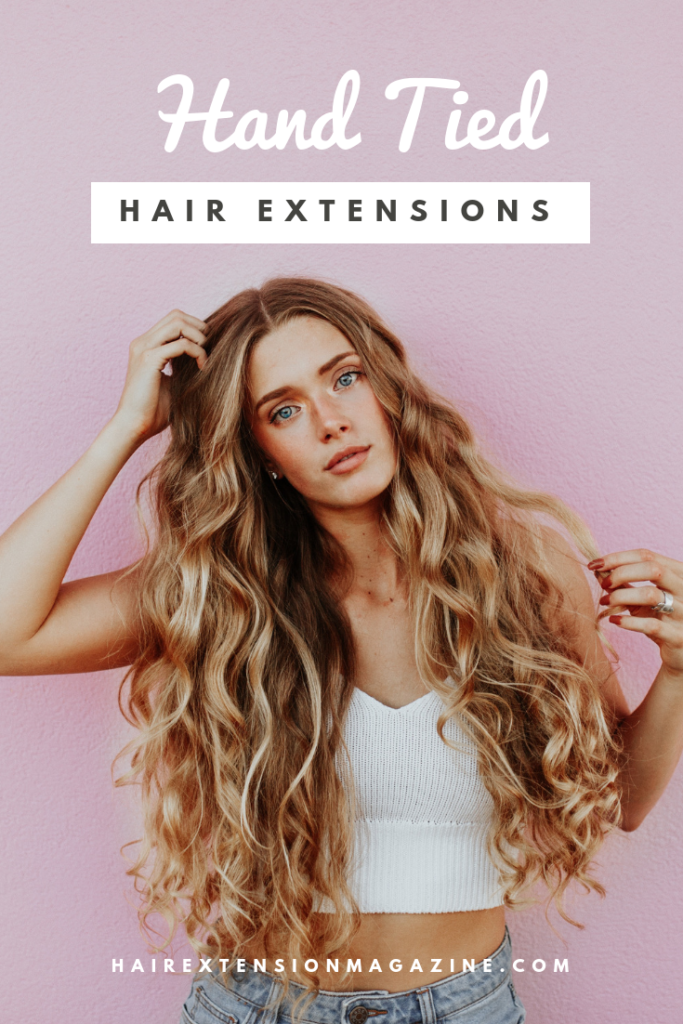As you probably noticed on the Bachelor last night, long, full volume hair is definitely back. Do you know the method of hair extensions most of these women are using? Hand-tied hair extensions are nothing new, it’s actually one of the oldest methods of hair extensions. We’ve even seen some supermodels such as Naomi Campbell use this method. Before you run to the salon, make sure you’re educated in the risks that Hand-Tied and Sew-in hair extensions can have on your scalp and hair. Luckily, the hair extension experts at Hair Extension Magazine are here to help!

Application
To clarify, “hand tied wefts” is an all-encompassing term that describes attaching a weft or “curtain” of hair to natural hair. This can be accomplished by weaving or sewing the weft to the hair. Weaving or sewing first involves creating rows of braids in the client’s natural hair, then taking a special needle and thread the weft of hair is literally sewn together with the braid forming a bond. Another technique involves using silicone lined micro links to thread a small portion of the client’s hair along with a small portion of the wefted hair, the link is then closed using small pliers to form the attachment.
Safety
Hand tied wefts have been around for a long time, but that doesn’t make them the best option for extension wearers. Hand Tied hair extensions can cause some major damage, especially in women with fine thin hair. In many cases the amount of hair being attached to a client’s natural hair is just too dense or heavy and can create breaking/shedding of the client’s natural hair which simply cannot support the weight, this is commonly referred to as “traction alopecia”.
Comfort and Care
The comfort of hand-tied wefts can vary depending on the quality of the hair and application. Some people may experience pulling and tightness on their scalp. If the hand-tied wefts are left in too long between applications your head will feel very heavy. Taking care of hand-tied hair extensions can also be difficult because you cannot treat it like your actual hair. This method requires a lot of maintenance.
Just like all industries, the extension industry has evolved and now offers much safer, more comfortable, and more natural extension attachment methods that can be achieved in half the time. Make sure to do your research and check out our Hair Extension Method page.
Are you a hand-tied hair extension wearer? Let us know in the comments below!
Pin it:


Sayble
I’ve had had tied wefts in my hair for a year and have zero damage. In fact, my hair has grown and appears healthier since I don’t mess with it as much and am more gentle with it. I have fine hair and have never had an issue with this method of extensions, perhaps poor technique will lead to damage.
Dawn
I wore the hand-tied hair extensions for only two months. I’m still dealing with the damage it did to my hair almost two years later. I have a lot of hair, but it’s fine hair. So on top of having fine hair and all the texturizing the stylist did to my hair before installing the extensions, it was recipe for disaster. I knew when one of the wefts fell out and I could see how much of my hair own hair was attached, I was in trouble. When I had them taken out for good, I was left with 8 bald spots in the back of my head and a lot of hair breakage. I wanted hair extensions to help me get through the awkward phase of growing my hair long. I ended up having to get a chin length bob to try and fix the damage. Please do your research and ask A LOT of questions. Don’t believe anyone who says that hand-tied extensions won’t cause damage. If you have fine hair, I would look at different options.